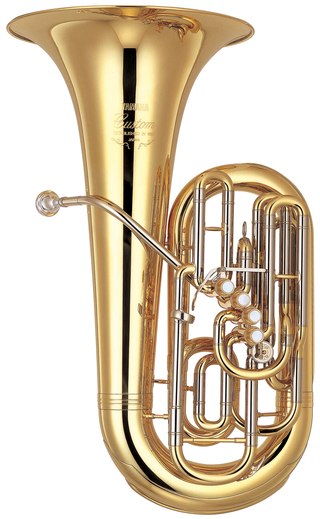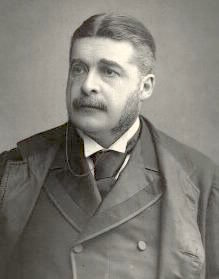Description
The work consists of a short emphatic introduction, followed by three distinct but thematically linked sections:
- a slow opening section in polonaise rhythm.
- a longer waltz section with the first subject played by the woodwinds and the second (syncopated) subject by the strings.
- a lively galop as a finale.
The version of the score published during Sullivan's lifetime takes eleven minutes or so in performance. The whereabouts of the composer's autograph score were not publicly known until Terence Rees purchased it at auction in 1966. [2] In the 1980s, a longer version of the score was prepared, drawing on Sullivan’s manuscript and including two passages deleted by the composer before the original 1889 publication. One of the two is a formal recapitulation of the first waltz subject, making the whole middle section a classical example of sonata form. [3] Most performances in concert or on record use the shorter version, but the D'Oyly Carte Opera Company's 1992 recording uses the uncut text. [4]
The work is scored for 2 flutes, piccolo, 2 oboes, 2 clarinets in B♭, 2 bassoons, 4 horns in E♭, 2 valve-trumpets in E♭, 3 trombones, ophicleide or bass tuba, extra bass tuba ad lib., 2 timpani, cymbals, bass drum, triangle, side drum, and strings. [5] Originally the two lowest brass parts were assigned to ophicleide and serpent, as those instruments were used in the Birmingham Festival orchestra despite their imminent obsolescence, but Sullivan suggested to the conductor Alfred Broughton in a subsequent 1880s pre-publication performance in Leeds that a tuba be used instead of the ophicleide and a contrabassoon instead of the serpent. [6]
Analysis and reception
What makes the piece unusual is that (the first waltz tune excepted) all three dances use the same melodic theme. The rhythmic and harmonic treatment, however, gives each dance its own character. Liszt had developed this technique, but its use in a light orchestral piece was new. Sullivan later used the technique in his comic operas: for example the Lord Chancellor’s motif in Iolanthe , which appears in three different forms. After Sullivan’s death, Elgar adopted and extended the technique in his First Symphony, where the scherzo is scarcely recognisable as transformed in the adagio. [7]
The piece was well received at its premiere in Birmingham. Reviewing a performance of the overture at The Crystal Palace a month later, the critic for The Times wrote, "A more sparkling and animated orchestral piece of its kind it would be difficult to name." [8] The contemporary critic Henry Lunn wrote in The Musical Times , "Mr Sullivan's themes are so melodious [combining] instinct with refined feeling, his instrumentation so graceful and ingenious, and his treatment of the subjects so thoroughly musician-like, that his composition appeals as much to the educated as to the uneducated ear". [9]
A section of the galop is the only music used by Sir Charles Mackerras in his ballet Pineapple Poll that is not taken from Sullivan's operas. [10]

The euphonium, also known as the baritone or aerophone, is a medium-sized, 3 or 4-valve, often compensating, conical-bore, tenor-voiced brass instrument that derives its name from the Ancient Greek word εὔφωνος euphōnos, meaning "well-sounding" or "sweet-voiced". The euphonium is a valved instrument. Nearly all current models have piston valves, though some models with rotary valves do exist.

The tuba is the largest and lowest-pitched musical instrument in the brass family. As with all brass instruments, the sound is produced by lip vibration – a buzz – into a mouthpiece. It first appeared in the mid-19th century, making it one of the newer instruments in the modern orchestra and concert band, and largely replaced the ophicleide. Tuba is Latin for "trumpet".

Sir Arthur Seymour Sullivan was an English composer. He is best known for 14 operatic collaborations with the dramatist W. S. Gilbert, including H.M.S. Pinafore, The Pirates of Penzance and The Mikado. His works include 24 operas, 11 major orchestral works, ten choral works and oratorios, two ballets, incidental music to several plays, and numerous church pieces, songs, and piano and chamber pieces. His hymns and songs include "Onward, Christian Soldiers" and "The Lost Chord".

Sir Alan Charles MacLaurin Mackerras was an Australian conductor. He was an authority on the operas of Janáček and Mozart, and the comic operas of Gilbert and Sullivan. He was long associated with the English National Opera and Welsh National Opera and was the first Australian chief conductor of the Sydney Symphony Orchestra. He also specialized in Czech music as a whole, producing many recordings for the Czech label Supraphon.

The cimbasso is a low brass instrument that covers the same range as a tuba or contrabass trombone. First appearing in Italy in the early 19th century as an upright serpent, the term cimbasso came to denote several instruments that could play the lowest brass part in 19th century Italian opera orchestras. The modern cimbasso design, first appearing as the trombone basso Verdi in the 1880s, has four to six rotary valves, a forward-facing bell, and a predominantly cylindrical bore. These features lend its sound to the bass of the trombone family rather than the tuba, and its valves allow for more agility than a contrabass trombone. Like the modern contrabass trombone, it is most often pitched in F, although models are occasionally made in E♭ and low C or B♭.

The ophicleide is a family of conical-bore keyed brass instruments invented in early 19th-century France to extend the keyed bugle into the alto, bass and contrabass ranges. Of these, the bass ophicleide in C or B♭ took root over the course of the 19th century in military bands and as the bass of orchestral brass sections throughout Western Europe, replacing the serpent and its later upright derivatives. By the end of the 19th century, however, it had been largely superseded by early forms of the modern tuba, developed from valved ophicleides.
Pineapple Poll is a Gilbert and Sullivan-inspired comic ballet, created by choreographer John Cranko with arranger Sir Charles Mackerras. Pineapple Poll is based on "The Bumboat Woman's Story", one of W. S. Gilbert's Bab Ballads, written in 1870. The Gilbert and Sullivan opera H.M.S. Pinafore was also based, in part, on this story. For the ballet, Cranko expanded the story of the Bab Ballad and added a happy ending. All the music is arranged from Sullivan's music.

Russian Easter Festival Overture: Overture on Liturgical Themes, Op. 36, also known as the Great Russian Easter Overture, is a concert overture written by the Russian composer Nikolai Rimsky-Korsakov between August 1887 and April 1888. It was dedicated to the memories of Modest Mussorgsky and Alexander Borodin, two members of the group of composers known in English as "The Five". It is the last of what many call his three most exceptionally brilliant orchestral works, preceded by Capriccio Espagnol and Scheherazade. The work received its premiere at a Russian symphony concert in St. Petersburg on 15 December [O.S. 3 December] 1888.
On two occasions, Felix Mendelssohn composed music for William Shakespeare's play A Midsummer Night's Dream. First in 1826, near the start of his career, he wrote a concert overture. Later, in 1842, five years before his death, he wrote incidental music for a production of the play, into which he incorporated the existing overture. The incidental music includes the famous "Wedding March".

In the South (Alassio), Op. 50, is a concert overture composed by Edward Elgar during a family holiday in Italy in the winter of 1903 to 1904. He was working on a symphony, but the local atmosphere inspired him instead to write what some have seen as a tone poem, with an Italian flavour. At about 20 minutes' duration it was the composer's longest sustained orchestral piece to that time.
The Overture in C, "In Memoriam", by Arthur Sullivan, premiered on 30 October 1866 at the Norwich Festival, in honour of his father, who died just before composition began.
The Overture to a Picaresque Comedy is a concert overture composed by Arnold Bax in 1930. It was premiered by the Hallé Orchestra conducted by the dedicatee, Sir Hamilton Harty, in November 1931. The work is untypical of its composer, who was not usually associated with comedy in music.

The Tempest incidental music, Op. 1, is a set of movements for Shakespeare's play composed by Arthur Sullivan in 1861 and expanded in 1862. This was Sullivan's first major composition, and its success quickly brought him to the attention of the musical establishment in England.
The Symphony in E, first performed on March 10, 1866, was the only symphony composed by Arthur Sullivan. Since Sullivan's death, it has frequently been called the "Irish" Symphony as it was composed in Ireland, and as a homage to Mendelssohn's "Scottish Symphony".

The Cello Concerto in D major is Arthur Sullivan's only concerto and was one of his earliest large-scale works. It was written for the Italian cellist Alfredo Piatti and premiered on 24 November 1866 at the Crystal Palace, London, with August Manns conducting. After this, it was performed only a few times. The score was not published, and the manuscript was destroyed in a fire in the 1960s, but the full score was reconstructed by the conductors Sir Charles Mackerras and David Mackie in the 1980s. Their version was premiered and published in 1986.

The euphonium repertoire consists of solo literature and parts in band or, less commonly, orchestral music written for the euphonium. Since its invention in 1843, the euphonium has always had an important role in ensembles, but solo literature was slow to appear, consisting of only a handful of lighter solos until the 1960s. Since then, however, the breadth and depth of the solo euphonium repertoire has increased dramatically.

French composer Hector Berlioz wrote a number of "overtures", many of which have become popular concert works. They include true overtures, intended to introduce operas, but also independent concert overtures that are in effect the first orchestral tone poems.

L'Île Enchantée is an 1864 ballet by Arthur Sullivan written as a divertissement at the end of Vincenzo Bellini's La Sonnambula at Covent Garden. It was choreographed by H. Desplaces.

The Light of the World is an oratorio composed in 1873 by Arthur Sullivan. Sullivan wrote the libretto with the assistance of George Grove, based on the New Testament. The work was inspired by William Holman Hunt's popular 1853–54 painting, The Light of the World. The story of the oratorio follows the whole life of Christ, told mostly in the first person, focusing on his deeds on Earth as preacher, healer and prophet.















